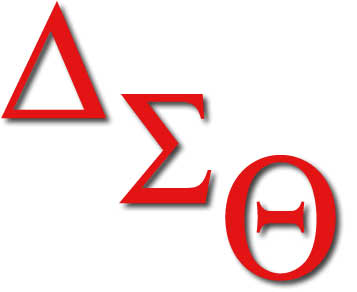The traditional methods of handling contracts and agreements — relying on printing, physically signing, scanning, and mailing — can be time-consuming and error-prone. eSignature API pricing provides a transformative solution that simplifies document workflows and provides a secure, legally binding way to obtain consent or approval on electronic documents.
I. Understanding eSignatures
At its core, an electronic signature in a PDF is a digital equivalent of your handwritten signature. It serves the same purpose – to indicate your agreement or consent – but it leverages electronic methods to capture that intent. This could be as simple as typing your name, drawing your signature on a touch screen, or uploading an online signature in PDFs.
Different types of eSignatures:
- Simple electronic signature: This is the most basic type of eSignature. It could be a typed name at the end of an email, a checkbox indicating agreement, or a simple image of your signature. While convenient, it offers limited security and is best suited for low-risk transactions.
- Advanced Electronic Signature (AES): AES offers a higher level of security. It is uniquely linked to the signer and can detect any changes made to the document after signing it.
- Qualified Electronic Signature (QES): QES is the most secure type of eSignature, often requiring a digital certificate issued by a trusted authority.
- Legal validity and enforceability of eSignatures: You might be wondering about the legal standing of eSignatures. Rest assured, they are legally valid and enforceable in most countries. The ESIGN Act and the Uniform Electronic Transactions Act (UETA) provide the legal framework in the United States, while the European Union has eIDAS. These regulations establish that online signatures in PDFs hold the same legal weight as traditional handwritten signatures in most business and legal contexts.
II. How eSignatures work
Behind the scenes, eSignature APIs orchestrate a secure and reliable digital signing process. It’s more than just scribbling a name on a screen – it’s about creating legally valid agreements that can be trusted.
Here’s a simplified look at how the process unfolds:
- Document preparation: First, you prepare the document you need to be signed. This can involve creating a new document from scratch or uploading an existing one, such as a PDF, to the eSignature API platform.
- Signer identification: Before the electronic signature in PDF is applied, the signer’s identity must be verified. This ensures that the person signing the document is who they claim to be. Different eSignature API platforms offer various authentication methods. These might include simple email verification, SMS codes, or even knowledge-based authentication (KBA), where signers answer questions only they would know. This ensures that the eSignature is uniquely linked to the signer.
- Signing: Once identity is confirmed, the signer can electronically sign the document. eSignature platforms provide various tools to make this process smooth. The signer can type their name, draw their signature online using a mouse or touchscreen or even upload an existing online signature in PDF.
- Verification and time-stamping: After the document is signed, the eSignature API takes over. It uses cryptographic techniques to secure the electronic signature in PDF format. This includes creating a unique digital fingerprint of the document to detect tampering and adding a timestamp to record the precise date and time of the signature.
- Document delivery: The final step is securely delivering the signed document to all relevant parties. Many eSignature platforms automatically send copies of the signed document to all participants and often include a comprehensive audit trail detailing the signing process for easy reference and compliance purposes.
Key components involved:
- Signer: This person applies their online PDF signature to the document. They may be your customer, employee, partner, or any other individual who needs to provide their consent or approval electronically.
- Document: This could be any electronic file that requires a signature – a contract, an agreement, a form, etc. The document is usually in PDF format to maintain formatting consistency across different devices and platforms.
- Platform: This eSignature API or software solution facilitates the entire signing process. It provides the tools for document preparation, signer authentication, signing, verification, and secure storage.
III. Legal framework and compliance
While eSignatures are widely accepted and legally valid, it’s crucial to understand the legal framework that governs their use. This ensures that your electronically signed documents are enforceable and meet regulatory requirements.
Two key pieces of legislation have played a crucial role in establishing the legal validity of eSignatures:
- The ESIGN Act (US): Enacted in 2000, this federal law grants legal recognition to electronic signatures and records, making them equivalent to their paper counterparts in most cases.
- The Uniform Electronic Transactions Act (UETA): This act, adopted by most US states, harmonizes state laws regarding electronic transactions and signatures, further solidifying the legal validity of eSignatures.
In the European Union, the eIDAS regulation (electronic Identification, Authentication, and Trust Services) sets the standard for electronic identification and trust services, including eSignatures.
It’s important to note that specific regulations may vary depending on your industry and location.
IV. Types of eSignature solutions
Overview of different eSignature platforms and providers
The market offers various platforms with varying features, capabilities, and pricing models. Some popular options include DocuSign, Adobe Sign, HelloSign, and Lumin Sign. These platforms offer varying complexity and functionality, catering to different business needs.
Comparison of features and functionalities
- Ease of use: Look for an intuitive interface that you and your signers can easily navigate.
- Security: Robust security measures, such as encryption, authentication, and audit trails, are crucial for protecting sensitive information and ensuring the legal validity of your e-signed documents.
- Integrations: Choose a solution that integrates easily with your existing software, such as your CRM or document management system.
- Customization: If you need to tailor the branding and workflow of your eSignature process, look for a platform that offers customizable options.
Considerations for selecting the right eSignature solution
Consider the following factors:
- Your specific needs: Identify the types of documents you need to sign, the volume of signatures required, and any industry-specific regulations you must comply with.
- Security and compliance: Prioritize a solution that offers robust security features and adheres to relevant regulations.
- Integration capabilities: Ensure the solution integrates smoothly with your existing systems to avoid disruptions to your workflow.
- Cost: Compare pricing plans from different providers and choose a solution that fits your budget.
eSignatures have become indispensable tools for businesses and educational institutions alike. By simplifying workflows, enhancing security, and improving the customer experience, eSignature APIs are paving the way for a paperless future. Lumin Sign API offers a comprehensive and affordable solution tailored to your organization’s needs.



